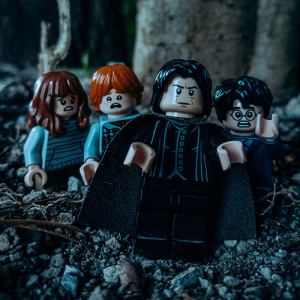2 Elements of a Literacy Narrative
Over time, a number of expectations have developed around what makes a paper a literacy narrative, and you’ll want to make sure that your paper includes them. There are four basic elements to focus on:
- A well-told story
- A gestalt shift
- Vivid detail
- Reflection
A well-told story
Given that this is a narrative essay, you’ll want to make sure you tell your story well. That means that you’ll have to think about how you structure the experience that you want to share. How much background will you need to provide your reader so they can follow along? Will they need a lot of details about the other people involved? How about the setting—is it clear where and when the story takes place?
Along with all the background information, you’ll need to consider how you organize your tale. The most basic approach[1] is to start at the beginning of the story and tell it all the way through to the end. You know how it goes: “Once upon a time” and all that. However, there are other ways to put a story together, too. Instead of starting at the beginning, you could throw the reader into the middle of the action and let the story flow from there. It’s an exciting and engaging way to start a story. You can even start your narrative at the very end of the story, explain how it ends, and then take the reader back to the beginning to complete the journey. You really do have several options in terms of organization, and they can all work.
Cast your mind all the way back to high-school English-literature classes where you studied plot. Do you remember the basic elements?
- Exposition – This is the background for your story. What is the setting (the time and place) of the events in your experience? Who is involved? What’s the topic? The exposition is where these sorts of details are revealed. Don’t spend a ton of time on this, but make sure we can understand what’s going on.
- Rising Action – This is where something happens to disrupt the status quo, the normal situation, of the people and places involved. Something happens to complicate everything and start the story really moving forward.
- Climax – This is the biggest moment of action, plot, and character. During the climax, the main character[2] has no idea what will happen or how things will turn out. This is a great moment to make really vivid and exciting with very descriptive actions and details.
- Falling Action – After the events of the climax, it’s time to start calming things down and helping them settle into place. It’s also a good time to answer any questions or provide explanations related to what happened in the climax.
- Resolution – After the climax, how does everything finally settle down? Does it look exactly the same as it did in the beginning? Probably not, so this is where you help the reader see what the new normal is.
However you choose to put your story together, focus on making it a story worth reading.
A gestalt shift
This is probably a new term for most of you, so let’s take a minute to look at it. “Gestalt” is a German term that is difficult to translate into English. It typically gets translated as “shape” or “form,” but in the field of psychology, where it’s typically used, it tends to mean something more like a “pattern” or “configuration.” The basic idea here is that gestalt relates to the way you see or understand things. A gestalt shift, then, refers to that moment when you understand something or see some part of the world in a very different way, typically to the point where you can’t return to how you saw things before.
One of the main focuses of a literacy narrative is that moment when your literacy[3] changes. We should see, through your writing, how you saw the world before the experience you relate and then how you see the world after going through it. This means you need to spend some time describing or showing us who you were before this experience instead of just telling us the story. Without knowing who you were before, it becomes harder for us to understand just how much you changed through the events of your narrative. Help us get a sense of how much you’ve changed and in what ways.
Vivid detail

One important thing that you’ll want to make sure you include in the telling of your tale is at least one moment that comes alive. Making a moment come alive takes a bit more effort than you might usually put into telling a story. Instead of just mentioning the event or the result or the action, you should expand it and help us live it with you. Instead of saying, “Harry Potter fought Voldemort and won,” try turning that moment into something more vivid: “Sweat trickling down the back of his neck, Harry tensed his grip on his wand, straining to hear the slightest noise that might betray Voldemort’s position. He knew that the next moment could mean certain death, but he was ready for that, so he raised his wand and slipped quietly into the dark room.” We get emotions, detailed descriptions, and minute-by-minute actions. Find one moment in your story that you can expand like that.
Keep in mind that the moment you choose to expand should probably be an important part of the experience. You might choose to expand the climax of your story, or perhaps the very beginning, or some other moment, but definitely make it a significant one. We don’t need a vivid description of the breakfast you ate before you got trapped in the bank during a robbery.[4]
Reflection
Telling an interesting story is an important part of writing an effective literacy narrative, but if that’s all you do, you haven’t written a literacy narrative. Without reflection, you’ve just told a good story. When you reflect, you examine and analyze the meaning of something. In this case, you need to examine the effect of the experience on you and how you changed because of it. You need to step away from the story—stop telling a story and making it interesting—and tell us what the story means to you.
Reflection can happen in a few different places throughout your essay. You can do it in a few sentences here and there as the story unfolds. You can do it all at once after the story. You can even put it all in the conclusion if you want. Study some of the example literacy narratives you’ve been assigned to see where they reflect and how much they say when they do.


